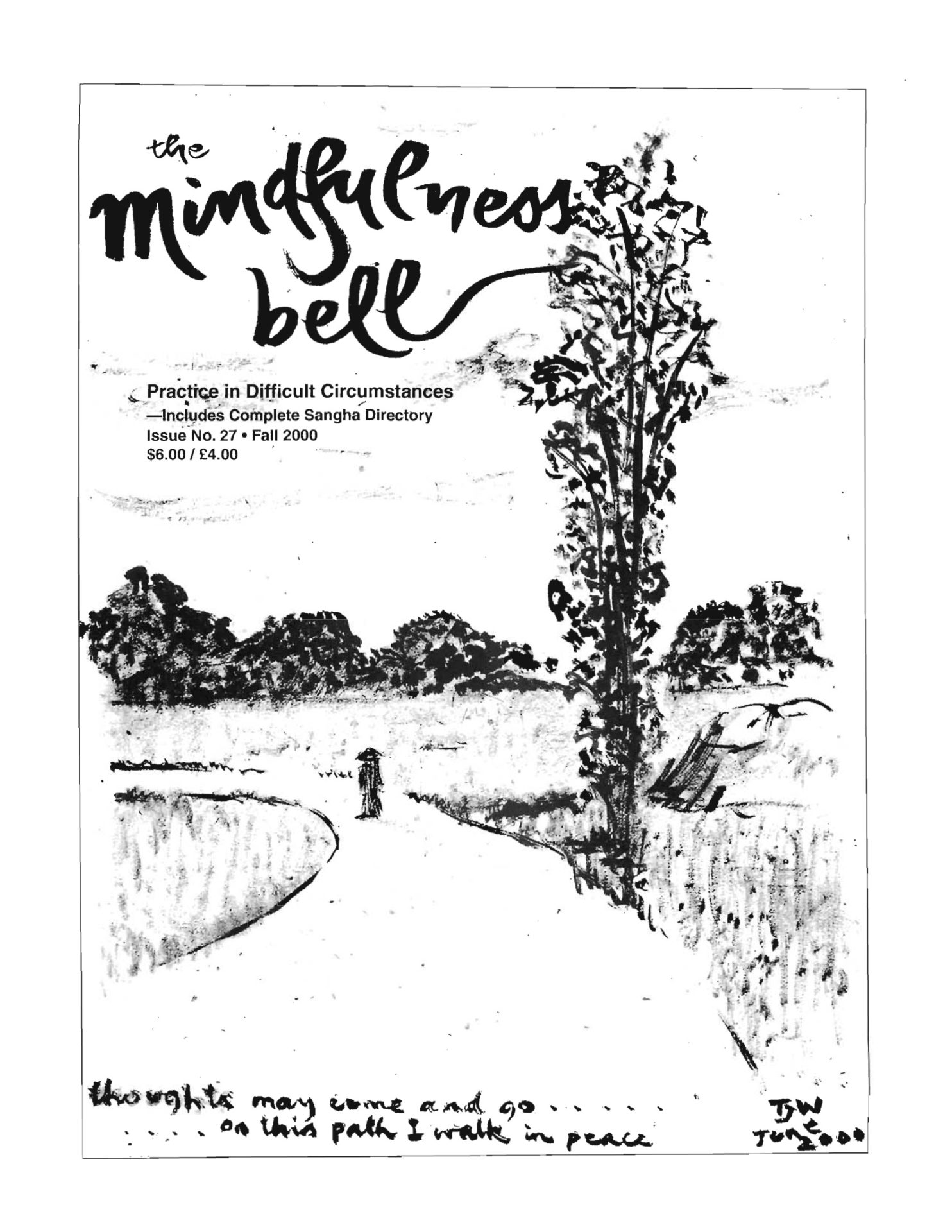In a world dominated by individualism and competition, it is a real challenge to live as a spiritual community. “Please use the Sangha eye to understand the nature of suffering in our times,” urged Thich Nhat Hanh during the 21-day retreat in Plum Village last June. The metaphor used by Thay was to practice like bees in a beehive or ants in an anthill, like a true organism. In our case, as humans, “a mindful organism, which is even better.” Realizing that, opinions and ideas are among the greatest obstacles to our practice together.
In a world dominated by individualism and competition, it is a real challenge to live as a spiritual community. "Please use the Sangha eye to understand the nature of suffering in our times," urged Thich Nhat Hanh during the 21-day retreat in Plum Village last June. The metaphor used by Thay was to practice like bees in a beehive or ants in an anthill, like a true organism. In our case, as humans, "a mindful organism, which is even better." Realizing that, opinions and ideas are among the greatest obstacles to our practice together. To be a real Sangha—a "living being" that communicates awakening (Buddha) and compassionate love (Dharma)—it is crucial to learn to harmonize different views. "Everybody," Thay said, "wants to do what he or she likes best. To take care as a Sangha, of the different opinions, restoring communication and practicing permanent sharing, is what we have to do." Not an easy task, especially when living in big cities in the West.
Fortunately, the retreat was a wonderful chance to meet friends in the Dharma, and enrich the understanding of these teachings. Among the many, I met Dennis Bohn, one of the more involved members of the New York Metro Community of Mindfulness. I still remember very well an article written by Dennis in The Mindfulness Bell about how to practice consensus in the delicate process of decision-making. ["Deciding How to Decide," Issue #20] When the article appeared, our Milan Sangha was going through a very difficult moment of its quite young history. The problem was deciding how to decide. We shared about the article, and wanted it translated and published in the Italian Sangha newsletter. The deep inspiration and the support we received from that experience was part of our growth, even though conditions in our environment were not the same as the New York Sangha Dennis described. Three years later, at Plum Village, Dennis generously shared with me the latter part of his Sangha's story.
Q. Do you think that, in New York, you developed already as a group, the capacity to express togetherness and live as a mindful organism, at least as related to decisions?
A. I don't know if we have evolved to that point yet. I think that decision making by consensus was just the right process for our group. What I might stress today is that we cultivated the value of sitting there and working over a decision. It reminds me the parable of the blind men and the elephant. Everyone has a little bit of a different viewpoint, but if you can sit a little longer, a more accurate picture of the elephant emerges.
Q. In Milan, the core members of the Order of Interbeing wondered if it was more helpful to include everyone in the process of decision-making rather than invite to the meetings only the more committed friends. Now, Thay has explained very clearly that also lay Sanghas can apply the Sanghakarman procedure, a mix of democracy and seniorship. What is your experience?
A. We started thinking about how to make decisions as a community, because at the first meetings to formally organize the New York metropolitan community, no one agreed on anything. It took a year to get a definite proposal for a decision making process, inspired by the method used by the Quakers. We wanted to be as inclusive as possible. In fact, anybody in our community has the right to attend a meeting and speak out. But for an individual to block consensus and prevent the community from moving forward on an issue, we ask a commitment. The person must have practiced with the Sangha for a year and have attended two of the previous four meetings of the core community. This way, they are more likely to fully understand the background of the matter being considered by the Sangha. Our opinion is that to make a decision, like how to coordinate a day of mindfulness or how to use donations, is very important, but the process the Sangha uses to come to it is far more important.
Q. Patience is the key, I guess.
A. Sure. The meetings are not been always completely wonderful, but now the qualities of tolerance, patience, and skillful speech are part of the culture of our community. We have learned not to be in the hurry to get a decision right in that meeting. Furthermore, we take as much time as we need, so as not to push things before their time has come and allow the whole group to cope with different ideas.
Q. Might we call it the embodiment of the Sangha eye?
A. I only mean that in my experience of this consensus model, the collective vision, the Sangha eye, is much clearer and purer than in any single individual. Ultimately, I have seen the collective wisdom of the group grow and become much stronger. To me, this is a real wonder.
Alberto Annicchiarico, True Gathering of Understanding, is a journalist for a daily newspaper, and practices with Dharma Door Sangha in Milan, Italy.

